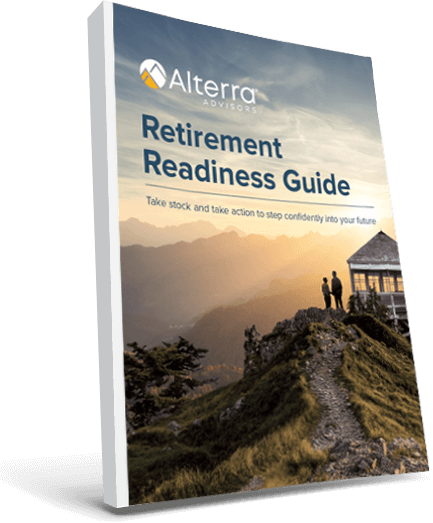THE QUARTER IN BRIEF
Movement in U.S.-China trade negotiations, an accommodative Federal Reserve, evidence of decent economic growth – all this brought some fourth-quarter tailwinds to Wall Street. The S&P 500 advanced 8.53% in the final three months of the year. Foreign stock markets also posted Q4 gains, and some clarity emerged regarding the Brexit. Gold and oil both posted Q4 gains. Home buying tapered off. As the quarter ended, a new federal law was passed, affecting both retirement savers and retirees.
DOMESTIC ECONOMIC HEALTH
In the fourth quarter, traders reacted to even the tiniest bits of news concerning U.S.-China trade relations. New 15% tariffs were scheduled for select Chinese imports on December 15. Those tariffs were never implemented, for on December 13, Chinese and U.S. officials announced an agreement on a preliminary trade pact. In this “phase-one” deal, to be signed in Washington this month, the U.S. agrees to phase out existing tariffs on Chinese products, and China agrees to buy more U.S. crops. The phase-one deal also made a start in addressing the most pressing issue in Sino-American trade relations: the protection of U.S. intellectual property in China.
The Federal Reserve made its third interest rate cut of the year in October – the third cut in three meetings. Then, it signaled that it may not adjust short-term interest rates for all of 2020. In December, the central bank’s newest dot-plot (a chart used to convey the benchmark interest rate outlook for coming quarters) showed that none of the 17 members of the Federal Open Market Committee expected a rate cut in 2020, and only four anticipated any kind of rate hike. Currently, the target range for the federal funds rate is 1.50-1.75%.
In terms of economic indicators, the fall increase in hiring was surprising news for labor market analysts. The Department of Labor said that employers added 156,000 net new jobs in October; then, 266,000 in November. These numbers hinted at an economy picking up rather than slowing down. Unemployment was at 3.6% in October, declining to 3.5% in November. The broader U-6 unemployment rate (which counts the underemployed as well as the unemployed) was at 7.0% in October and 6.9% a month later.
Consumer spending, according to the Department of Commerce, rose by 0.4% in November, improving on an October increase of 0.3%. Through November, retail sales were up 3.5% year-over-year, with respective October and November gains of 0.4% and 0.2%. During Q4, the Bureau of Economic Analysis revised its Q3 gross domestic product estimate up from 2.0% to 2.1%.
Households maintained their optimism; however, in December, the Conference Board’s Consumer Confidence Index recorded its fourth decline in five months. With revisions factored in, the index went from 126.1 in October to 126.8 in November to 126.5 in December. The University of Michigan’s consumer sentiment gauge, on the other hand, had its best reading since May in December, rising to 99.3. It rose in each month of Q4, ascending to 95.5 in October and 96.8 in November.
Inflation picked up in the fourth quarter; the Consumer Price Index rose 2.1% in the 12 months ending in November, 0.3% higher than the annualized inflation seen a month earlier. The core CPI (which factors out energy and food costs) was up 2.3% year-over-year in November.
Manufacturing seemed to stand out as the U.S. economic weak spot in Q4. The Institute for Supply Management’s Factory Purchasing Managers Index was below 50 for the whole quarter (indicating an economic sector that is shrinking). The December reading of 47.2 was the poorest since June 2009. ISM’s PMI for the larger service sector of the economy was above 50 in both October and November (54.7, and then 53.9).
The quarter also saw the passage of the Setting Up Every Community for Retirement Enhancement (SECURE) Act, a major piece of legislation impacting traditional retirement accounts. Under the SECURE Act, the age for required minimum distributions (RMDs) from these accounts rises from 70½ to 72. (This change affects only those who turn 70½ in 2020 or later.) The SECURE Act also lets seniors with earned income keep contributing to these accounts after age 70.
GLOBAL ECONOMIC HEALTH
The IHS Markit Purchasing Managers Index (PMIs) for the eurozone factory sector was at 46.3 in December; a number below 50 indicates a sector in which activity is contracting. Seven of eight countries measured by this index saw manufacturing weaken further in December; Germany’s factory sector was in the poorest shape by the end of the quarter, according to Markit’s data summary. Factory sectors in Italy and the Netherlands showed their most dramatic monthly contraction since 2013 in December.
The Caixin China General Manufacturing PMI for China was at 51.5 by December, down a bit from 51.8 in November. The rate of new Chinese factory orders declined in Q4, but there was a small gain for export orders. China’s state factory PMI had a poorer reading of 50.2 in both November and December. As Q4 ended, China’s government announced it would reduce cash reserve requirements for the nation’s banks, which would effectively pour another 800 billion yuan into China’s financial system.
While the quarter opened with much uncertainty about when (and even if) the Brexit would occur, some of this ambiguity was resolved by the end of the year. The Conservative (Tory) Party won a decisive victory in December’s United Kingdom general election, and Boris Johnson remained Prime Minister. As a consequence, the Brexit may occur by the extended January 31 deadline set by the European Union, as Johnson and the Conservatives appear to have the votes needed to approve a revised Brexit deal. Their next task: forging a working trade pact with the European Union before 2020 ends.
WORLD MARKETS
Gains far outnumbered losses last quarter. The largest advances were made by emerging-market benchmarks: Argentina’s Merval jumped 43.36%, Russia’s RTS rose 16.12%, and Brazil’s Bovespa climbed 10.41%. In the Asia-Pacific region, there were three improvements worth mentioning: Japan’s Nikkei 225 gained 8.74%; China’s Shanghai Composite, 4.99%; South Korea’s Kospi, 6.53%. France’s leading stock index, the CAC 40, gained 5.29%; Germany’s benchmark, the DAX, added 6.61%.
In the midst of all this, a couple of stock indices failed to advance. Thailand’s Set50 index slipped 2.00% in the quarter, and Australia’s ASX 200 benchmark went sideways, losing 0.06%.
COMMODITIES MARKETS
What were the best-performing commodities of the quarter? Well, there were several gains of 10% or more, and at the top of the list, there is coffee, which rose 23.88% on the Intercontinental Exchange (ICE) in Q4. Soybean oil advanced 17.67%; palladium, 16.56%; WTI crude oil, 14.70%. RBOB gasoline gained 12.23%; wheat, 11.19%. WTI crude ended the quarter trading at $61.18 a barrel. Gold rose 3.41% in Q4, with the price hitting $1,523.10 on the New York Mercantile Exchange (NYMEX) on December 31.
Some other futures took Q4 losses. Natural gas fell 15.69% for the quarter, and Q4 brought setbacks of 5.36% for orange juice, 2.94% for corn, and 2.45% for the U.S. Dollar Index, which ended the year at 96.16.
REAL ESTATE
When Freddie Mac conducted its last Primary Mortgage Market Survey of the decade (December 26), it measured the average interest rate on a 30-year conventional mortgage at 3.74%, and the mean interest rate for a 15-year conventional mortgage was at 3.19%. Three months earlier (September 26), the average interest on the 30-year home loan was at 3.64%, while the average interest on the 15-year loan was at 3.16%.
30-year and 15-year fixed rate mortgages are conventional home loans generally featuring a limit of $484,350 ($726,525 in high-cost areas) that meet the lending requirements of Fannie Mae and Freddie Mac, but they are not mortgages guaranteed or insured by any government agency. Private mortgage insurance, or PMI, is required for any conventional loan with less than a 20% down payment.
The pace of home buying decelerated during the fall. National Association of Realtors’ reports showed residential resales down 1.5% in October and 1.7% in November. Still, sales were up 2.7% year-over-year. By November, the median sale price of an existing home was $271,300, a 5.4% increase from November 2018. The NAR said that there was less than four months of existing home inventory in both October and November; it views six months of inventory as a sign of a balanced market.
New home sales, by the estimation of the Census Bureau, fell 2.7% in October, but bounced back with a 1.3% gain a month later. Groundbreaking on new housing developments had definitely picked up from 2018. Federal government data showed housing starts up 13.6% year-over-year in November, with permits for future construction up 11.1% year-over-year.
T I P O F T H E Q U A R T E R
You may not want to abbreviate the year 2020 on financial, insurance, legal, and health care documents you sign or date. If you write “2/1/20” and there is enough space left after the “20,” an unscrupulous party could add a couple of numerals and change that date to 2/1/2018 or 2/1/2017, and so on.
LOOKING BACK, LOOKING FORWARD
As the chart below reveals, the big Wall Street benchmarks surged in the fourth quarter. Their Q4 gains capped off one of the better years of the decade for domestic stocks. Both the Nasdaq Composite and S&P 500 had their best years since 2013. The quarter-ending settlements: Dow, 28,538.44; S&P, 3,230.78; Nasdaq, 8,972.60.
|
MARKET INDEX |
Y-T-D CHANGE |
Q4 CHANGE |
Q3 CHANGE |
|
DJIA |
+22.34 |
+6.02 |
+1.19 |
|
NASDAQ |
+35.23 |
+12.17 |
-0.09 |
|
S&P 500 |
+28.88 |
+8.53 |
+1.19 |
|
BOND YIELD |
12/31 RATE |
3 MO AGO |
1 YR AGO |
|
10-YR TREASURY |
1.92 |
1.68 |
2.69 |
Sources: barchart.com, treasury.gov – 12/31/19
Indices are unmanaged, do not incur fees or expenses, and cannot be invested into directly. These returns do not include dividends. 10-year Treasury yield = projected return at maturity given expected inflation.
The opening quarter of 2020 got off to a bullish start, with a 330-point gain (and a new record close) for the Dow Industrials on January 2. With the phase-one U.S.-China trade deal slated to be signed and the economy not giving off distinct signals of slowing, traders entered the new quarter seeing some upside in the market. Questions are on the horizon, though. Can geopolitical tensions in the Middle East be managed? Will the next earnings season meet forecasts? While the market opened 2020 with a rally, there are certainly potential headwinds around.
Q U O T E O F T H E Q U A R T E R
“Age is… wisdom, if one has lived one’s life properly.”
MIRIAM MAKEBA
CITATIONS:
1 – us.spindices.com/indices/equity/sp-500 [12/31/19]
2- cnbc.com/2019/12/13/china-says-it-has-agreed-to-us-trade-deal-text-indicates-next-step-is-signing.html [12/13/19]
3 – investors.com/news/economy/fed-meeting-dow-jones-reaction-3-big-questions/ [12/11/19]
4 – investing.com/economic-calendar [12/31/19]
5 – investing.com/economic-calendar/cb-consumer-confidence-48 [1/3/20] 6 – tradingeconomics.com/united-states/consumer-confidence [1/3/20]
7 – marketwatch.com/story/us-manufacturing-slumps-worsens-in-december-as-ism-index-falls-to-10-year-low-2020-01-03 [1/3/20]
8 – marketwatch.com/story/with-president-trumps-signature-the-secure-act-is-passed-here-are-the-most-important-things-to-know-2019-12-21 [12/25/19]
9 – nasdaq.com/articles/daily-markets%3A-2020-looks-to-begin-the-way-2019-ended-2020-01-02 [1/2/20]
10 – asiatimes.com/2020/01/article/china-slowing-caixin-purchasing-mgr-data-confirm/ [1/2/20]
11 – forbes.com/sites/pascaledavies/2019/12/15/for-europe-the-brexit-battle-is-just-getting-started [12/15/19]
12 – barchart.com/stocks/indices/world-indices?viewName=performance [12/31/19]
13 – barchart.com/futures/performance-leaders?viewName=chart&timeFrame=3m [12/31/19]
14 – marketwatch.com/investing/future/gold [1/2/20]
15 – freddiemac.com/pmms/archive.html?year=2019 [1/2/20]
16 – marketwatch.com/story/existing-home-sales-fell-17-in-november-as-americans-struggled-to-find-affordable-properties-2019-12-19 [12/12/19]
17 – economy.com/united-states/residential-housing-starts [1/2/20]
18 – barchart.com/stocks/indices?viewName=performance [12/31/19]
19 – abcnews.go.com/Business/stocks-post-biggest-year-gain-2013/story?id=68008745 [12/31/19]
20 – barchart.com/stocks/indices?viewName=performance [9/30/19]
21 – treasury.gov/resource-center/data-chart-center/interest-rates/Pages/TextView.aspx?data=yieldAll [12/31/19]
22 - cnbc.com/2020/01/02/dow-futures-point-to-a-higher-open.html [1/2/20]
The “Alterra” name was coined by joining the Latin roots “alter”, the origin of the word “altruism” with “terra” meaning earth or land. This name reflects the company philosophy of “clients before profits” and providing firmly grounded advice.

